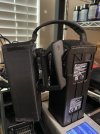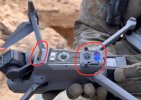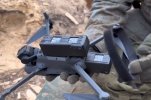Hello all,
Here is my review of the Mavic 3 double battery mod purchased on AliExpress.
Charging time takes about twice as long as the standard DJI battery. The standard DJI battery weighs 330 grams while the double battery weighs 652 grams. The double battery is quite heavy.
I did a hover test with both the original DJI and AliExpress double battery down to 9%.
The double battery lasted for 45 minutes while the original DJI battery which had 10 charge cycles on it lasted for 34 minutes.
It sounded like the motors were really straining to keep the weight of the double battery in the air. The two front motors were extremely hot to the touch when it landed.
Would I use this battery again? Probably not due to the extreme heat of the front motors. I’m actually worried now that this has caused some damage which may result in a premature motor failure.
If anyone has any questions, I’ll be happy to answer them.
Thanks,
Solidhouse
Here is my review of the Mavic 3 double battery mod purchased on AliExpress.
Charging time takes about twice as long as the standard DJI battery. The standard DJI battery weighs 330 grams while the double battery weighs 652 grams. The double battery is quite heavy.
I did a hover test with both the original DJI and AliExpress double battery down to 9%.
The double battery lasted for 45 minutes while the original DJI battery which had 10 charge cycles on it lasted for 34 minutes.
It sounded like the motors were really straining to keep the weight of the double battery in the air. The two front motors were extremely hot to the touch when it landed.
Would I use this battery again? Probably not due to the extreme heat of the front motors. I’m actually worried now that this has caused some damage which may result in a premature motor failure.
If anyone has any questions, I’ll be happy to answer them.
Thanks,
Solidhouse














